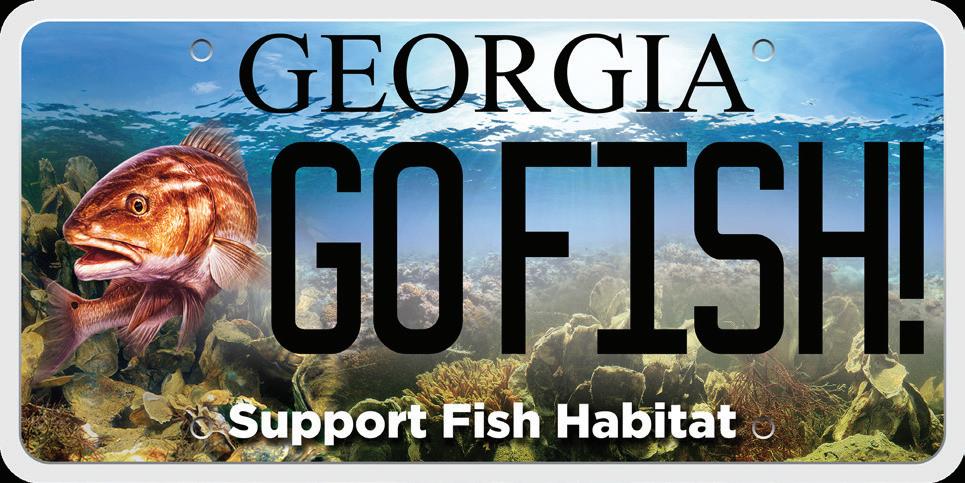Southern T ides
all about the water
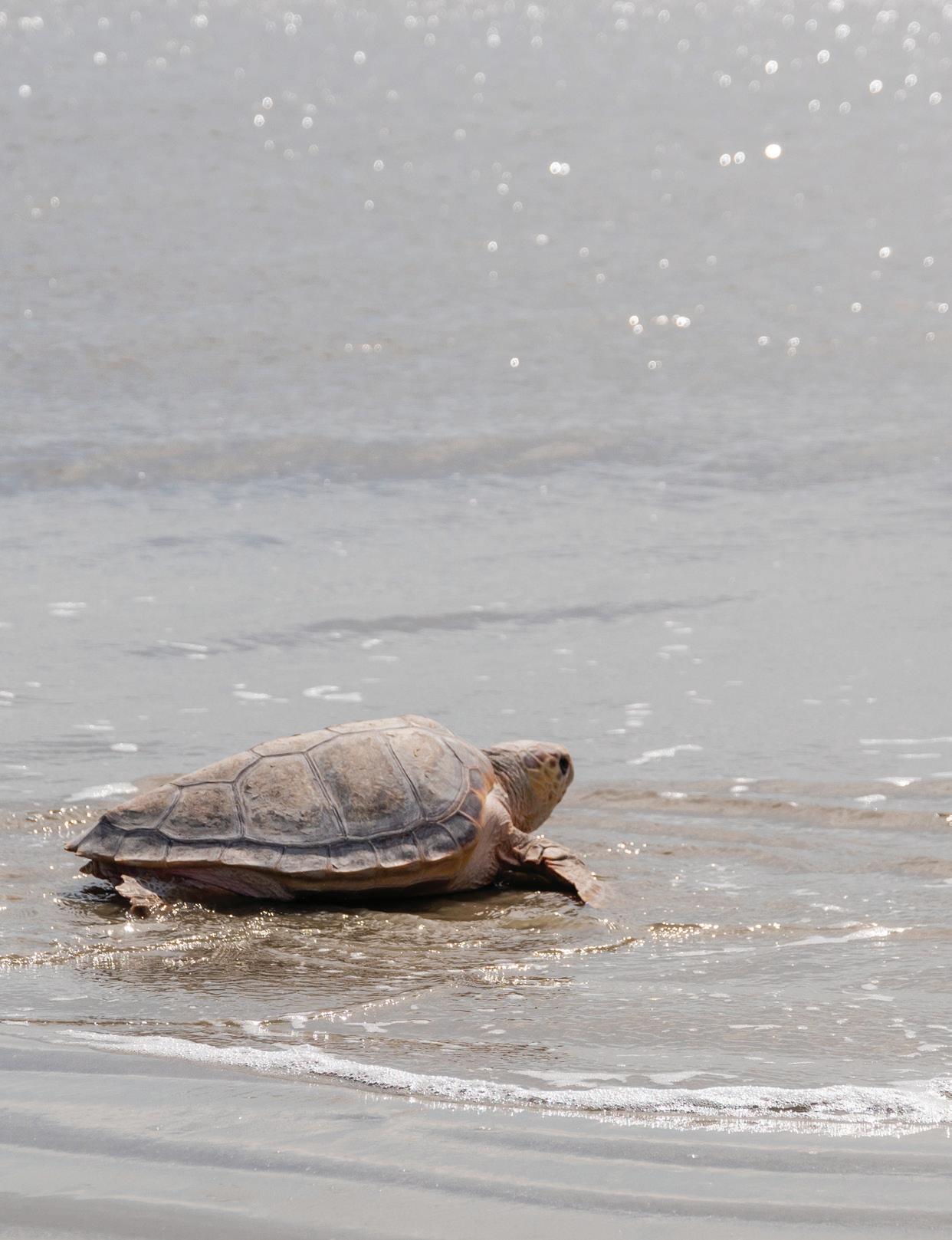


















Crew
PUBLISHER/EDITOR
Amy Thurman amy@southerntidesmagazine.com
ASSISTANT EDITOR
Neva Parsons neva@southerntidesmagazine.com
DISTRIBUTION & SALES Jay Rich jay@southerntidesmagazine.com
CONSULTING NATURALIST
John "Crawfish" Crawford subtropicalnaturalist@gmail.com
THE BITTER END COLUMNIST
Captain J. Gary "Gator" Hill theoriginalcaptaingator@gmail.com
THE RIVERKEEPER REPORT Meaghan Gerard meaghan@ogeecheeriverkeeper.org
Contributors
Nick Riccio, Jr. Wildlife Photographer


Laurie Lohne Photography
Jane Wilkinson-Bunch Recipe
Rick Lavender GADNR Wildlife Resources Division
Emily Kenworthy
UGA Marine Extension & Georgia Sea Grant

Copyright © 2015-2023
All content herein is copyright protected and may not be reproduced in whole or part without express written permission. Southern Tides is a free magazine, published monthly, and can be found at multiple locations throughout coastal Georgia.
(912) 484-3611 info@southerntidesmagazine.com
Read the Digital Version at: www.SouthernTidesMagazine.com
Visit us on social media: www.issuu.com/SouthernTidesMagazine.com Facebook.com/southern-tides-magazine

Southern Tides Magazine is printed by Walton Press, Monroe, Ga.
Letters to the Editor: We love hearing from you!
Questions, comments, ideas, or whatever you'd like to share, please do!
Send your thoughts to any of our email addresses listed above.



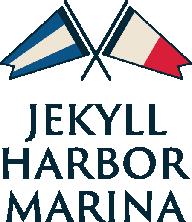




As I’ve said many times, we live in one of the most beautiful places on Earth. What makes it so beautiful? First, the setting: the ocean, estuaries, tidal creeks and rivers, and acre after acre of marshes. And in that setting, the plants and animals that live, grow, and thrive here, from live oaks and palmettos, to wild Georgia shrimp, dolphins, sea turtles, and shore birds.
Like many aspects of life, living in such an amazing and wonderful place requires trade-offs. No, I’m not talking about living with humidity or mosquitos. In this instance, I’m talking about living with wildlife.
In this issue, we talk about three different creatures coastal residents (and guests) might encounter in the coming months. Two that everyone adores – sea turtles and manatees; and one that not everyone cares as much about – snakes. All three are protected, and all three, regardless of our personal feelings about them, are a fact of life here.
Sea turtles are easy to love. Those huge, adorable critters that nest on our beaches and swim in our waters, and have become symbols of our coast with their likenesses used on everything from home décor to business logos to souvenirs. Although they’re present in our waters year-round, nesting season has begun and they can be found not only in open ocean, but also in smaller waterways such as tidal creeks and rivers. Sometimes with only their heads visible, and sometimes swimming just below the water’s surface. Posting a look-out on your boat while underway, and keeping lights out on or near the beach are just two ways you can help protect these magnificent creatures.
Although the warmer waters of Florida are their winter homes, they travel here in warm weather to feed in our waters and marshes. Manatees have been having a tough time of it in recent years and need all the protection we can give them. Again, posting a look-out on your boat while underway is critical as these slow-moving animals can’t get

out of the way quickly enough to avoid you. But also, no matter how much you want to, do NOT give them fresh water. Much like a dog that will beg for food if fed from the table, this will encourage manatees to look for fresh water sources near docks, which puts them at risk of boat strikes, and discourages them from foraging for what they need, which alters their behavior and could prove fatal. You should also be aware that if caught, you could face fines of up to $11,000 and up to a year in jail. More information about protecting sea turtles and manatees can be found on page 19.
And now we come to snakes. These reptiles get a bad rap, when in fact, you’re much more likely to be struck and killed by lightning than bitten and die from a snakebite. I understand fear – ask anyone who knows me how I react to spiders. But of the 47 species of snakes found in Georgia, only seven are venomous, and several of those are frequently confused with their harmless, non-venomous cousins.
But snakes play critical roles in our coastal ecosystem, eating things you likely don’t want near your home, such as rodents, centipedes, and other unsavory critters. You should also be aware that if you kill a non-venomous snake in Georgia, even if it’s a case of mistaken identity, you could be fined $1,000 and face up to a year in jail. A far better option would be to leave the area and contact a wildlife removal expert. More info about snakes and what to do if you encounter one can be found on page 9.

Without sea turtles, visiting manatees, and even snakes, our coastal region wouldn’t be what it is. It’s up to us to live peaceably alongside them and protect them, which protects our coast as well.

See you out there!
Amy Thurman Editor Chief
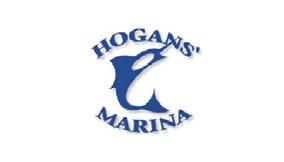


With spring warming, snakes are moving and Daniel Sollenberger’s phone is ringing.
As state herpetologist for the Georgia DNR, Sollenberger is a go-to for snake questions. And this time of the year, most of those questions center on two topics: What species is this and what should I do?
As for the first, seldom is the snake a venomous species, according to Sollenberger, a senior wildlife biologist with DNR’s Wildlife Conservation Section.
Whether it’s venomous, of course, is the worry or fear underlying most of the questions. Chances are it’s not. Only seven of the 47 species native to Georgia are venomous and only one – the copperhead – usually thrives in the suburban areas where many Georgians live.

"While at least one of the state’s venomous snake species could be found in each county in the state, seldom are they the most common snakes encountered,” Sollenberger said.
Now to the second question: What should you do, or not do, if you see a snake?
• You can try to identify it from a distance. Resources such as georgiawildlife.com/georgiasnakes, which includes DNR’s Venomous Snakes of Georgia brochure (bit.ly/GASnakeID), can help.
• Do not attempt to handle the snake. Give it the space it needs.
• Remember that snakes are predators that feed on small mammals, amphibians, insects and even other snakes. There is no need to fear non-venomous snakes. Also, Georgia’s native non-venomous species are protected by state law, and one – the eastern indigo – is federally protected.
• If a clearly identified venomous snake is in an area where it represents a danger to people or pets, consult georgiawildlife. com/preventing-wildlife-conflicts for a list of private wildlife removal specialists. Most bites occur when a snake is cornered
or captured and defending itself.
Non-venomous snakes such as scarlet kingsnakes, eastern hognose snakes and watersnake species are frequently confused with their venomous counterparts – coral snakes, rattlesnakes and water moccasins, respectively. Although pit vipers, which include all venomous species native to Georgia except for coral snakes, are often identified by their broad, triangular-shaped heads, many non-venomous snakes flatten their heads when threatened, which can make their heads appear triangularshaped. Also, some non-venomous species have color patterns similar to venomous snakes.
The bottom line: While it’s likely not venomous, use caution around any unidentified snake. For more on Georgia’s snakes, visit georgiawildlife.com/georgiasnakes. Amphibians and Reptiles of Georgia (University of Georgia Press) also provides a comprehensive reference.
Snake Insights
• Venomous vs. poisonous: Venom is a toxic substance. But a key difference when the terms are used to describe organisms is how the toxin is delivered. Venomous animals inject theirs by biting, stinging or sticking – think venomous snakes, wasps and stingrays. Poisonous species, such as poison frogs, deliver toxins passively, such as when they’re eaten or through skin secretions when they are touched.
• Benefits: While some snakes eat rodents and even venomous snakes, others prey on creatures some Georgians also may not want near their homes. Brown and red-bellied snakes, for example, feed on snails and slugs, the bane of gardeners. Crowned snake species primarily eat centipedes.
• Baby snakes? Snakes such as earth and brown snake species are small (usually less than 12 inches long) and homeowners occasionally mistake them as juveniles. The common concern here: Are the parents nearby? Some snake species are livebearers and some are egg-layers. But most snakes do not exhibit parental care. If there are parents, they are not watching over their offspring.
• Prevention: To reduce the potential for snakes near your home, remove brush, log piles and other habitat features that attract mice, lizards and other animals on which snakes prey.
A non-venomous rat snake. Photo by John Jenson, GADNR


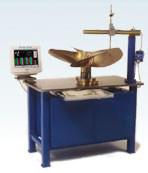








• Add one tablespoon olive oil and one tablespoon butter to a large non-stick skillet over medium heat.
• Add asparagus and saute until crisp-tender, about 4-6 minutes. Remove sauteed asparagus from skillet and set aside.

Contributed by Jane Wilkinson-Bunch
Southern Lovin' in the Oven Recipes & More Daily
Now that it's warming up outside, many of us turn to lighter meals that are quick to prepare and don't heat up the kitchen. This fits the bill! Don't forget to support your local seafood markets or catch it yourself.
1 ½ lbs medium raw shrimp, peeled and deveined
1 ½ lbs asparagus (1 bunch) rinsed and trimmed
3 tablespoons butter
1 tablespoon olive oil
5 cloves garlic, minced
1 teaspoon Italian seasoning
2 teaspoons onion powder
Salt and fresh cracked pepper, to taste
¼ cup vegetable stock
1 tablespoon Sriracha (or any hot sauce you like)
Crushed chili pepper flakes, optional
Juice of ½ lemon (slice remaining half for garnish)
Fresh chopped parsley or cilantro, for garnish
• In same skillet, add remaining two tablespoons butter and shrimp. Season with salt and pepper; fry shrimp 1-2 minutes on one side.
• Add minced garlic and sprinkle in Italian seasoning and onion powder; stir to combine. Then turn shrimp to cook on the opposite side. Cook shrimp for 1 minute.
• Add 1/4 cup vegetable stock and Sriracha to pan. Allow the sauce to reduce for 1 minute, making sure not to overcook the shrimp.
• Push cooked shrimp to side of skillet and add asparagus back in. Stir asparagus to coat, then squeeze half of a lemon over shrimp and asparagus. Stir and cook for 1-2 minutes until asparagus is reheated.

• Remove from heat, garnish with parsley, lemon slices, and red crushed chili pepper if you like. Serve immediately.
Submit your recipe along with photo to amy@southerntidesmagazine.com.




Overall, Coastal Georgia received an B, a moderately good score (74%). The twelve indicators that examine human health, fisheries, and wildlife are used to define Coastal Georgia health. The highest scoring indicators were red drum and sea turtle nesting, and both had perfect scores (100%). The lowest scoring indicators this cycle were blue crab (18%) and bald eagles (48%), which are due to factors that are explored in the full report.
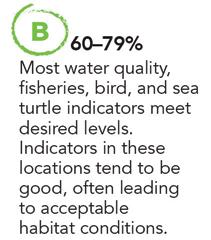
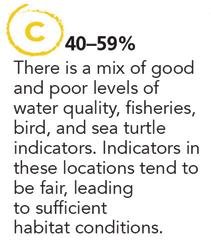
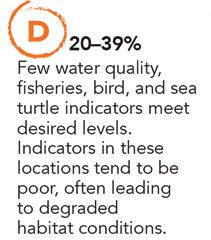


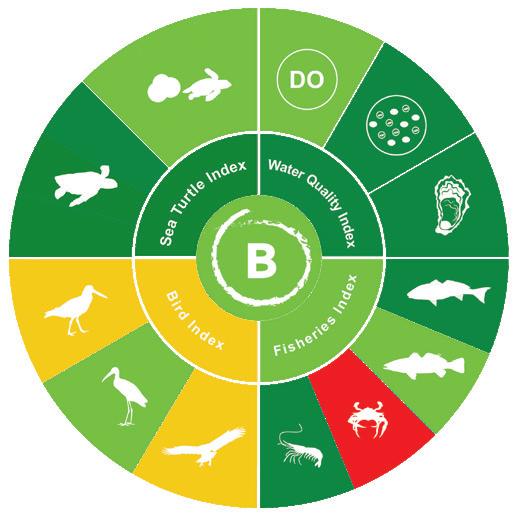
Scoring Legend
>80-100% good
>60-<80% moderately good
>40-<60% moderate
>20-<40% poor
0-<20% very poor
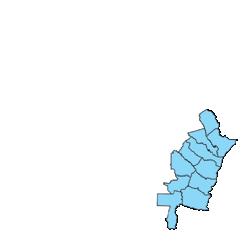


The fisheries index scored 69% in 2022. Red drum and shrimp had good scores, and spotted seatrout had a moderatly good score. Blue crabs had a poor score, most likely due to high salinity conditions triggering movement upriver to areas that are outside the DNRs stationary sampling areas.

The water quality index scored 86%, an A, in 2022. Overall, water quality indicators are good, meaning that it is generally safe to swim, to eat local shellfish, and that oxygen levels support fish and other species. Fecal coliform and enterococcus had good scores, while dissolved oxygen had a moderately good score.


The sea turtle index scored an 87%, an A, in 2022. Overall, sea turtle indicators are good. Sea turtle nesting had a perfect score of 100%, while sea turtle hatching had a moderately good score. Sea turtle management is promoting populations and maintaining excellent nesting.
The bird index scored 53%, a C, in 2022. Wood storks had a moderately good score. American oystercatchers had moderate scores likely due to significant mammalian depredation and tidal flooding at some nesting locations.

Statewide survey efforts in 2022 recorded 229 occupied bald eagle nest territories, a record number for Georgia. On the coast, the 73 nest territories recorded was typical, but only 47% fledged at least one young. Nests successfully fledged 1.5 young each, which is average. However, the 50 eaglets that fledged fell shy of the approximate 80 the coast normally produces. The survey revealed more failed nests than expected. Some had dead eaglets. Others were missing young that usually would not have left the nest by that time. The carcasses of three bald eagles collected on the coast in February and March 2022, tested positive for highly pathogenic avian influenza virus (HPAIV). It’s likely some eagles were infected by preying or scavenging on dead or sick waterfowl that often gather in large rafts in coastal waters during winter.


In Coastal Georgia, report card scores vary from year to year. By tracking health over time, we can evaluate changes in the environment and prioritize management and restoration. For example, DNR actively manages wood stork and American oystercatcher populations by considering habitat creation, predator management and nesting area closures to prevent disturbances.
Sea turtles continue to fare well on the Georgia coast. The nesting score has remained at 100% since the Report Card's inception, and this year, sea turtle hatching improved by 14 points, from 59% to 73%. This increase was attributed to a record number of nests in Georgia this cycle, the absence of major storm events, and human intervention through nest protection and predator management.


Annual species abundances in DNRs sampling can be affected by natural variability in environmental conditions. This is especially true for blue crabs and high salinity, where populations move away from DNRs stationary sampling stations. DNR fisheries staff observed above average salinity at sampling sites in 2022, likely causing blue crabs to have migrated to other areas with lower salinity.
To see the full report, visit: coastalgadnr.org/ReportCard

















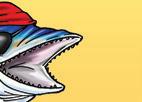

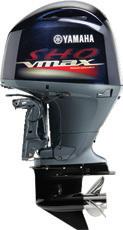




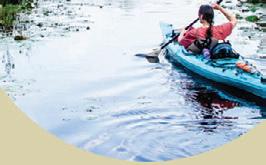

 Contributed By BoatUS
Contributed By BoatUS



Boat Owners Association of the United States (BoatUS), has recently added an exclusive online boat buying and selling hub to its association membership benefits. With more than 800,000 dues-paying members, the annual BoatUS membership now includes access to “BoatUS Boats for Sale,” powered by Boatline, a Trader Interactive brand.

As part of the partnership between BoatUS and Boatline, BoatUS members are offered a complimentary enhanced boat sale listing within the online boat buying and selling website, Boatline.com, containing tens of thousands of listings, good for 90-days and saving members the $19.95 fee. Members are also able to add photos and video to help close the sale.

“Buying and selling a boat are very important moments in a boat owner’s life,” said BoatUS Vice President Heather Lougheed. “BoatUS Boats for Sale is a great member benefit to make this task easier and save some money.”

“We are thrilled to partner with BoatUS to offer this exclusive benefit to their members,” added Lori Stacy, Chief Executive Officer of Trader Interactive, parent company of Boatline. “Our mission is to connect buyers and sellers with a seamless marketplace experience, so that boat buyers can get out on the water sooner and boat sellers can turn a quick profit. Teaming up with BoatUS enables us to do that for its members, and we’re excited to be working with the industry’s leading boat owners association.”
You can become a member of BoatUS for only $25 annually and enjoy benefits such as BoatUS Boats for Sale, a subscription to BoatUS Magazine, complimentary DSC-VHF radio registration, discounts on marina fuel, transient slips, repairs and more. Visit to BoatUS.com/Membership.
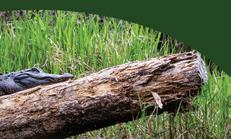



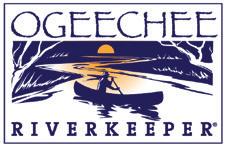
Satilla Riverkeeper is hiring! The organization is looking for its next riverkeeper. In addition to being the lead advocate for the mission, the RK will supervise a full or part-time staff and occasional interns, will coordinate volunteers for river monitoring and various fundraising, educational, and river-appreciation events. The Satilla RK position provides an opportunity to positively impact the environment of southeastern Georgia and to join coalitions to protect Georgia’s coast and all of Georgia’s natural waters. www.satillariverkeeper.org/jobs.html



 Compiled by Meaghan Gerard Communications & Administrative Director Ogeechee Riverkeeper meaghan@ogeecheeriverkeeper.org
Compiled by Meaghan Gerard Communications & Administrative Director Ogeechee Riverkeeper meaghan@ogeecheeriverkeeper.org
St. Mary’s Riverkeeper held a 3-day event to explore the watershed from Sea To Swamp. They showed off the beauty of our river and surrounding ecosystem to many concerned and interested people. Day 1 was Cumberland Island National Seashore, Day 2 was the upper St. Marys River, and Day 3 was the Okefenokee National Wildlife Refuge. www.stmarysriverkeeper.org/
Throughout the year, ORK offers special events just for members. On June 10, ORK has partnered with the Botanic Garden at Georgia Southern for a plant walk with Horticulture Manager Joshua Jones. The walk will be followed with an optional get-together at Eagle Creek Brewery, in Statesboro. This event is free to ORK members, although the Botanic Garden accepts donations. www.ogeecheeriverkeeper.org/events
ORK held their Canoochee Paddle Race on Saturday, April 22, 2023 in Evans County. The race stretched along approximately seven miles of the Canoochee River, from Brewton Bridge to Rocks River Bridge landing. Paddlers of kayaks, stand-up paddleboards, and canoes competed. Non-racing paddlers also followed the route after racers started.
Single winners
1. Jon Dedic – 1:21:48.9
2. Carl Fuller – 1:28:39.0
3. Michael Downs – 1:29:28.5
Tandem winners
1. Kyle Lott and friend – 1:31:55.5
2. Shawn Rosenquist and son Jacob – 1:36:37.1
3. Tom Oxnard and John Schoettle - 1:47:35.4
Creative Costume Award - Brent Croft
Best Dressed Award - Jordan Light and Mary Elizabeth Scott
Dynamic Duo - Damien and Heather Scott
Lazy River Award - Casey Corbett – 3:18:44.3
View initial images and more details: www.ogeecheeriverkeeper.org/canoochee-paddle-race-2023-results/
Race participants on the Canoochee River. Photo by Braydon Williams The Okefenokee SwampWith a pair of binoculars and data sheets in hand, Beth Webster heads out the back door of the UGA Marine Education Center and Aquarium to her first stop, a wooden nest box just outside the facility. She walks up to the box, gently knocking a few times so as not to alarm any birds, before opening the door to peer inside.
Four Eastern bluebird eggs, no bigger than peanut M&Ms, are nestled inside among twigs, grasses and pine needles. She records her observations on her data sheet before heading to the next box.
Webster is one of five aquarium volunteers participating in UGA Marine Extension and Georgia Sea Grant’s bird nest box monitoring program on Skidaway Island. The program involves tracking the nesting and breeding behaviors of common birds, including Eastern bluebirds and Carolina chickadees.
Between March and August, members of the group take turns checking the small circuit of boxes on the UGA Skidaway Marine Science Campus. They collect data on nesting activity, noting failed and successful nesting attempts, and submit their data to NestWatch, a nationwide nest-monitoring program designed to track status and trends in the reproductive biology of birds.
UGA educators have maintained a nest box trail on campus for more than a decade. Katie Higgins, marine educator and volunteer coordinator, decided to establish a more robust community science effort in 2019 with the goal of engaging aquarium volunteers in scientific research and increasing awareness of bird populations on the island.

“Community science is a really useful way to collect broader data on common birds,” said Higgins. “Scientists have access to this data so they can have basic information on developmental time periods and species prevalence. They can also look at longterm trends, like shifts in [population] range or when nesting is beginning in an area and when it’s ending.”
Information gathered through community science can
also inform conservation efforts and management decisions. The Eastern bluebird is a prime example of this. From 19201970, the number of bluebirds in the U.S. plummeted due to habitat destruction, pesticide use, an influx of domestic cats and competition with non-native birds for nesting space.
In response, community members formed the North American Bluebird Society and set up bluebird boxes, creating networks of trails and monitoring bluebird nesting success. Because of these efforts, Eastern bluebird populations have rebounded and even stabilized.
In 2021, Higgins received funding from the Georgia Ornithological Society to expand the nest box monitoring program and develop a new educational display at the UGA Aquarium focused on community science and bird conservation.
She recruited and trained more volunteers and increased the number of boxes on campus with support from Skidaway Audubon. During last year’s nesting season, six volunteers gave 38 hours of service to the effort. In total, the group documented 28 nesting attempts and 74 baby birds.
“It’s really a magical experience,” said Webster. “You’re in nature, you’re watching the cycle of life really unfold in front of your eyes. From the birds building a nest to the baby birds fledging, it’s a privilege to be able to peek into their world and see this cycle of life that happens so incredibly quickly.”
As part of the new educational display, aquarium visitors will be able to witness the nesting process in real time thanks to a live camera feed. The exhibit also provides information about birds that commonly nest in coastal Georgia and ways to support bird conservation efforts.
“I hope visitors take away that birds are fascinating and easy to observe,” said Higgins. “There are lots of local organizations that are working with bird species, and they can do something to enhance habitat or add to greater scientific knowledge.”
Katie Higgins (right) teaches students about the nest box monitoring program during Summer Marine Science Camp at the UGA Aquarium.Manatees migrate from Florida to Georgia each spring, attracted by abundant marsh grass and other aquatic vegetation. As early as March and into November, manatees occur in all tidal waters throughout coastal Georgia, said senior wildlife biologist Clay George of DNR’s Wildlife Conservation Section.
“Manatees feed on smooth cordgrass and other emergent vegetation that is abundant in our freshwater and brackish marshes,” George said. “When manatees arrive in Georgia they have essentially unlimited food.”
Boaters can lessen the risk they pose to manatees by heeding low-speed and no-wake zones, particularly around docks where the big mammals eat algae growing on the structures. George also advised sticking to the deeper channels when boating in tidal rivers and creeks. Manatees “are often right along the edge of the marsh,” he said, feeding on Spartina alterniflora, or salt marsh cordgrass.
With sea turtle and manatee sightings on the rise on Georgia’s coast, boaters should be on the lookout for these large animals.
Boat strikes are a leading cause of sea turtle strandings and manatee injuries and deaths. Manatees and all sea turtle species found in Georgia are protected under the Endangered Species Act and the Marine Mammal Protection Act.
Tips on what to watch for in the coast’s murky waters differ. A “footprint” of swirls may mark a 9-foot-long manatee underwater. A 300-pound loggerhead sea turtle may show only its head when it surfaces. Sea turtles spend more time on the surface in spring, putting them at greater risk of being hit by a boat.
What can boaters do? Be vigilant, be ready to slow down or steer clear, and if they do run into a sea turtle or manatee, stand-by and immediately contact the DNR at 800-2-SAVEME (800-272-8363). This provides biologists the best chance to help these animals and gather data useful in conserving them. Boaters will not be charged if operating their boat responsibly and the collision was an accident.
State Sea Turtle Program coordinator Mark Dodd, a senior wildlife biologist with the Georgia DNR, emphasized that sea turtles are not limited to the ocean side of barrier islands. “They occur everywhere, not just in the ocean,” Dodd said. “They’re in the sounds, the estuaries, the tidal creeks.”
While nesting data indicates that federally threatened loggerheads are holding their own, boat strikes that kill or injure reproductive females are a significant threat. Of the 78 dead or injured sea turtles found on Georgia beaches last year, almost 30 percent of those that could be assessed had suffered injuries consistent with being hit by a boat.
Manatees share a similar problem. These big, slow-moving mammals swim just below the surface, often putting them in harm’s way for oncoming boats. Watercraft collisions caused about a quarter of the manatee mortalities documented in the state since 2005.

Everyone is encouraged to report any dead manatees and sea turtles they see. (If the turtle is tagged, include the tag color and number in the report if possible.)
Sea Turtle Strandings
Report stranded sea turtles in Georgia by calling DNR at 800-2-SAVE-ME (800-272-8363).
Reporting Manatees
If you see or photograph a healthy, injured or dead manatee, call DNR at (800) 2-SAVE-ME (800-272-8363). Note the date, time, location and number of manatees seen, plus the coordinates, if possible.
Manatees sometimes gather in groups to socialize. Large mating “herds” can top 20 individuals. Socializing is normal manatee behavior, senior wildlife biologist Clay George said. “If you’re boating and see a manatee, slow down and keep a sharp eye … other manatees could be nearby.”
Boaters can help protect manatees by:
◆ Looking for manatees before cranking your boat’s motor.
◆ Using caution when navigating in shallow water and along the edge of a marsh. Manatees cannot dive away from boats in these areas.
◆ Heeding “slow speed,” “no wake” and manatee warning signs, especially around docks.
◆ Wearing polarized sunglasses to reduce glare and make it easier to spot manatees below the surface.
◆ Watching for trails of large swirls in the water called footprints that may be caused by manatees diving away from the boat.
◆ Never feed manatees or give them fresh water. This could teach the animals to approach docks, putting them at greater risk of a boat strike.
◆ Never pursue, harass or play with manatees. It can be harmful to manatees and it’s illegal.
Adult manatees socializing at the surface. Photo provided by GADNR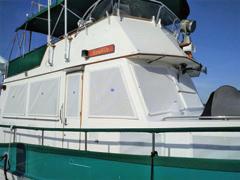

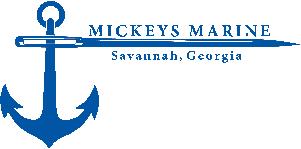








The Georgia Sea Turtle Center (GSTC) was excited to welcome the Georgia Aquarium team to Jekyll Island on April 17, to assist with the release of eight sea turtles: six Kemp’s Ridley patients and two loggerheads.




Turtles Released (length in inches is straight carapace length)
◆ Kemps 23001 “Hemsworth” (7.85 pounds, 10.75 inches)
◆ Kemps 23002 “Momoa” (11.86 pounds, 12.64 inches)
◆ Kemps 23003 “Zeta” (9.88 pounds, 12 inches)
◆ Kemps 23005 “Spike” (7.01 pounds, 10.6 inches)
◆ Kemps 23006 “Beaker” (8.11 pounds, 11.1 inches)
◆ Kemps 23007 “Connery” (6.75 pounds, 10.75 inches)
◆ Loggerhead 22007 “James Bond” (58.64 pounds, 21.06 inches)
◆ Loggerhead 22010 “Sandy” (44.84 pounds, 19.25 inches)
GSTC staff will continue long-term care for three additional sea turtle patients undergoing treatment: a Kemps Ridley named Eeyore, and two loggerheads named Honey Badger and Jordan. Guests are welcome to visit the center in the coming weeks to see and learn more about these patients as they recover. For hours and more information, visit: www.jekyllisland.com/ activities/georgia-sea-turtle-center/ Photos provided by Jekyll Island Authority
There I was, my family and I, just playing in the water, swimming and spending some quality time together. when out of nowhere some guys rush up on us in boats, yelling and cursing at us. If that wasn’t bad enough, they threw things at us, one of them striking my mate a fatal blow. To top it of, this grizzled old guy, a frightful fella with a missing leg, hurled a big spear right at me. When I saw he’d become fouled in the rope attached to it, I knew how to end this nightmare. I dove. I dove deep and fast, pulling him down ever deeper into a watery grave that he so deserved. So, your honor, I did what any self-respecting creature would do, I defended myself and what was left of the family. Yes, I sank their stinking boat, and I would do it again.
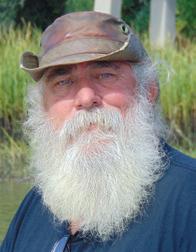
If this sounds somewhat familiar, it might be because I imagine this as the defense Moby Dick might have used if pulled into court for the destruction of the Pequod, most of her crew and her master, Ahab. Although the story portrays the great white whale as the antagonist, I see him as the protagonist. A splendid creature minding its own business, in its own world, when suddenly invaded and attacked.
Published in 1851, this work of fiction is loosely based on true stories. Herman Melville's novel drew from his own experiences aboard whaling ships, the story of an albino whale dubbed Mocha Dick that proved hard to catch, while the ending was based on the tragedy of the whaling ship Essex, out of Nantucket.
During the late 1700s and early- to mid-1800s whaling was big business for fleets out of New England and many others around the world. One of the most prized whales was the sperm whale, hunted not only for meat and blubber, but also for a prized product called spermaceti, an organ of waxy substance found in the heads of these whales.
The head of a sperm whale is nearly one third of its total length, and a larger specimen of this family can contain nearly a ton of this waxy liquid gold from which the sperm whale gets its name. Spermaceti could bring as much as 20 percent more profit than the oils and blubber rendered from this creature. The two main uses for this substance were making high-quality lubricant such as machine oil, and for making candles that burned much brighter and cleaner than tallow candles of the period.
Back to the Essex, the vessel on which Melville based the Pequod. At 87 feet in length and about 24 feet on the beam, she wasn’t much bigger than the whales she hunted. Sperm whales often reach lengths of 60 feet, and according to surviving members of the Essex, the whale involved was as long as the ship. The tale of the Essex is a sad one in many ways, even long before she was sunk in the Pacific, several thousand miles off the coast of South America. She suffered a knock down early on in the voyage, and fishing was poor – these boats could sometimes be out a couple years at a time to make their catch. But on the morning of November 20, 1820, all the stars aligned for the final moments of ship and crew. The Essex spotted a huge bull whale, acting strangely and laying on the surface, which ended up leading to their demise. And the rest of the story you know (if you’ve read Moby Dick).
Sadly, I am running out of space, so I leave you with this. Read the book In the Heart of The Sea, by Nathaniel Philbrick, about the sinking of the Essex. Or if you choose, watch the movie. The book is excellent, the movie not bad. You might enjoy the seafaring journey back in time.

'Til our wakes cross again, peace and love, and shrimp and grits. I'll see you on the water!
Captain Gator has spent the past several decades truly living the salt life, from living on and racing sailboats, to being a paddle guide, to becoming a 100-ton master and working in the tour boat industry. A strong love of history and the water has shaped him into becoming one part educator, one part entertainer, and one part storyteller. When asked if he is a native, his reply is yes, by osmosis.
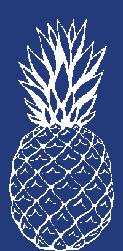



3 Bedroom, 3 Bath, 1050 sq feet. Nestled under the large oak trees is this historic Tybee cottage. Everything about it is perfect and unique in “Tybee’s Little Pink Cottage.” The entire home was totally and lovingly renovated in 2015. All of the original finishes remain to keep that perfect Tybee cottage feel. Baths were updated to give all of the modern conveniences. Steps to the beach and convenient to lots of shopping and restaurants. The yard is a huge lot with lots of entertaining areas to include an amazing firepit surrounded by pavers and overhanging oaks. There are three bedrooms and two of them are onsuite. The third has two sets of bunk beds. Fold out sofas as well. Room for everyone. After enjoying a wonderful meal upstairs, move to the screened porch or the open air but private first floor. It is ready for play time. Pool table, ping pong table, shower and a man cave with comfortable furniture and large TV. Nothing left out. A place for all to enjoy Tybee and its relaxing atmosphere.



$999,999


